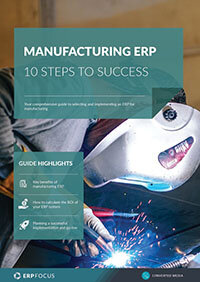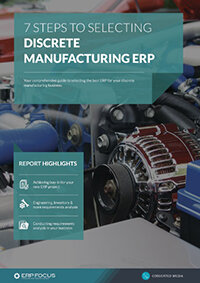4 Modern Features Which Can Give Your Electronics ERP a Boost
Many discrete manufacturing ERP systems today include valuable modules that in the past were separate and likely did not work with ERP even though much of the data is common. These newly integrated modules can be crucial to electronics manufacturers looking for an all-encompassing system.
Customer Relationship Management (CRM)
Customer relationships management (CRM) is often part of manufacturing ERP including electronics ERP nowadays. CRM manages inter relationships with current and future customers. Today’s customers should already be in your electronics ERP. They are part of taking new orders and managing accounts receivable. Future customers will need to be in ERP as soon as they place an order and change from future to a current customer.
To complete CRM we add many more contacts that are involved in developing an order. We also add data elements such as text to describe a contact event and codes to further the description and be used for sorting and filtering the events and names. CRM reporting would include a pipeline of anticipated orders over time into the future. Necessary future events would be planned and a probability of the future order shown so we could predict what orders will be coming in the future and plan component inventory, personnel, and even plant production capacity.
Product Lifecycle Management (PLM)
Product lifecycle management is another domain that often is part of modern manufacturing ERP systems. Electronics life cycles are short, new products are replaced in months in many electronics businesses. In the past, these were separate and stand-alone from electronics manufacturing ERP systems. PLM will manage a product from the idea, through development, testing the market and testing production, and building and selling the product. It also will include ongoing development through improved revisions and eventually the abandonment of a product at the end of its life. Much redundant data is eliminated by combining PLM with ERP. The product ID numbers are the same. Customers are the same. Development production testing will use the same production order system. We might be content to make the same device but our customers will want that sensor to be smaller, lighter, and able to work in harsher environments.
Supply Chain Management (SCM)
Some of today’s ERP systems also include supply chain management too. This is more than an extension of purchasing. It will include status from a contract manufacturer’s production system. It will include transit information, such as carrier, expected delivery, inbound customs, etc. It will include too status from 3PL’s such as inventory status in a distribution center, final fulfillment operation status, delivery to customer information, etc.
Analytics and Reporting
Don’t forget, ERP should also be your single source of all data necessary to run your business and to develop reports, dashboards, KPI’s, etc. that you will need to be successful in the electronics industry.
Free white paper

Manufacturing ERP: 10 steps to success
Complete step-by-step guide to manufacturing ERP software

Featured white papers
-

7 steps to selecting discrete manufacturing ERP
17 pages of ERP selection advice and industry requirements analysis
Download -

ERP Requirements template
Plan your ERP selection using our requirements template with 100 features in an editable spreadsheet. Include special requirements and extra detail in this exclusive template.
Download -

70 features to look for in your next ERP
A comprehensive guide to help you identify requirements for your ERP selection
Download
Related articles
-

How to use ERP workflow to improve supply chain management
Learn how automated ERP workflows can improve order management, production scheduling and more su...
-

Secret KPI: Why Your ERP Implementation Team Matters More Than Software
Learn how Godlan ensures successful ERP implementation for manufacturers with proven strategies &...
-

Top 10 ERP selection criteria (including checklist)
The most important ERP selection criteria you should keep in mind during your selection process.

